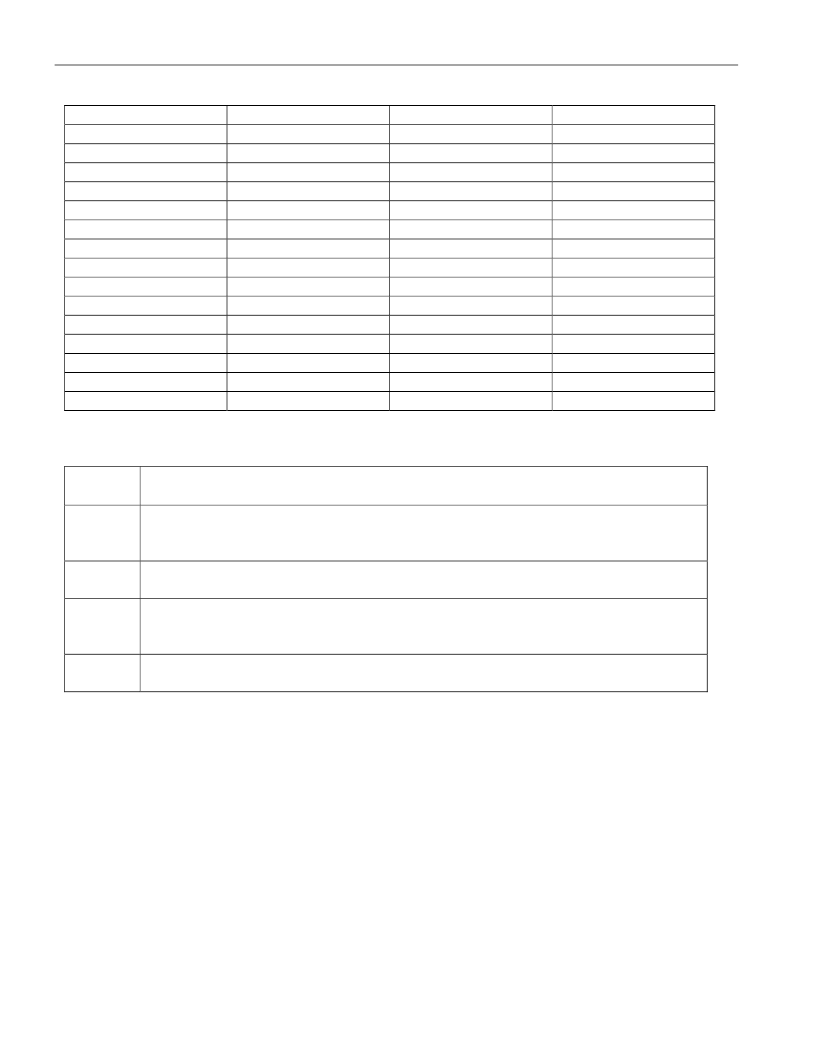- 您現(xiàn)在的位置:買賣IC網(wǎng) > PDF目錄376962 > DS1963S SHA iButton PDF資料下載
參數(shù)資料
| 型號: | DS1963S |
| 英文描述: | SHA iButton |
| 中文描述: | SHA iButton |
| 文件頁數(shù): | 22/37頁 |
| 文件大小: | 349K |
| 代理商: | DS1963S |
第1頁第2頁第3頁第4頁第5頁第6頁第7頁第8頁第9頁第10頁第11頁第12頁第13頁第14頁第15頁第16頁第17頁第18頁第19頁第20頁第21頁當前第22頁第23頁第24頁第25頁第26頁第27頁第28頁第29頁第30頁第31頁第32頁第33頁第34頁第35頁第36頁第37頁

DS1963S
22 of 37
SHA-1 Input Message Formats
(continued) Table 2
Validate Data Page, Sign Data Page, Authenticate Host, Compute First Secret, Compute Next Secret
M0[31:24] = (SS+0)
M0[23:16] = (SS+1)
M1[31:24] = (PP+0)
M1[23:16] = (PP+1)
M2[31:24] = (PP+4)
M2[23:16] = (PP+5)
M3[31:24] = (PP+8)
M3[23:16] = (PP+9)
M4[31:24] = (PP+12)
M4[23:16] = (PP+13)
M5[31:24] = (PP+16)
M5[23:16] = (PP+17)
M6[31:24] = (PP+20)
M6[23:16] = (PP+21)
M7[31:24] = (PP+24)
M7[23:16] = (PP+25)
M8[31:24] = (PP+28)
M8[23:16] = (PP+29)
M9[31:24] = (SP+8)
M9[23:16] = (SP+9)
M10[31:24] = MPX
M10[23:16] = (SP+13)
M11[31:24] = (SP+16)
M11[23:16] = (SP+17)
M12[31:24] = (SS+4)
M12[23:16] = (SS+5)
M13[31:24] = (SP+20)
M13[23:16] = (SP+21)
M14[31:24] = 00h
M14[23:16] = 00h
M15[31:24] = 00h
M15[23:16] = 00h
M0[15:8] = (SS+2)
M1[15:8] = (PP+2)
M2[15:8] = (PP+6)
M3[15:8] = (PP+10)
M4[15:8] = (PP+14)
M5[15:8] = (PP+18)
M6[15:8] = (PP+22)
M7[15:8] = (PP+26)
M8[15:8] = (PP+30)
M9[15:8] = (SP+10)
M10[15:8] = (SP+14)
M11[15:8] = (SP+18)
M12[15:8] = (SS+6)
M13[15:8] = (SP+22)
M14[15:8] = 00h
M15[15:8] = 01h
M0[7:0] = (SS+3)
M1[7:0] = (PP+3)
M2[7:0] = (PP+7)
M3[7:0] = (PP+11)
M4[7:0] = (PP+15)
M5[7:0] = (PP+19)
M6[7:0] = (PP+23)
M7[7:0] = (PP+27)
M8[7:0] = (PP+31)
M9[7:0] = (SP+11)
M10[7:0] = (SP+15)
M11[7:0] = (SP+19)
M12[7:0] = (SS+7)
M13[7:0] = 80h
M14[7:0] = 00h
M15[7:0] = B8h
Legend
Mt
Input buffer of SHA engine
0 t 15; 32-bit words
Starting address of secret
See Figure 5, Memory Map, memory pages 16 and 17
With Compute First Secret the secret data is replaced by all zeros.
Starting address of memory page
See Figure 5, Memory Map, memory pages 0 through 15
MPX[7] = Control bit M, see Figure 8
MPX[6] = Control bit X, see Figure 8
MPX[5:0] = (SP+12)[5:0]
Byte n of scratchpad
The counting of n is in decimal
SS
PP
MPX
(SP+n)
The SHA functions as well as the memory functions involve several flags that may affect the function
itself and the result of functions executed in subsequent steps. These flags are HIDE, CHLG, AUTH and
MATCH. Table 3 summarizes the operation of these flags. The only command that does not change any
flag is Read Scratchpad. Note that a power-on reset of the parasite-powered 1-Wire front end of the
device also affects the flags. This “Return to Probe” condition occurs typically when a DS1963S device
makes contact with a read/write probe of a host computer or bus master or if the connection is
intermittent. The most apparent is the HIDE-flag. If set it prevents the user from reading the data in the
scratchpad; the current value of the target address and E/S byte remain readable, though. The HIDE-flag
also affects the Write Scratchpad and Copy Scratchpad commands. The other three flags are used in
special situations only and remain cleared most of the time. The flags CHLG and AUTH act as a pair in
the host/user authentication process to ensure that commands are executed in a certain sequence. If the
sequence is correct and the subsequent Match Scratchpad command results in matching data, the
MATCH flag is set. The MATCH flag then may affect Validate Data Page, Sign Data Page or Read
Authenticated Page.
相關PDF資料 |
PDF描述 |
|---|---|
| DS1971 | 256-Bit EEPROM iButton |
| DS1973 | 4-kbit EEPROM iButton |
| DS1977 | 32KB EEPROM iButton |
| DS1977-F5 | 32KB EEPROM iButton |
| DS1982U | UniqueWare iButton |
相關代理商/技術參數(shù) |
參數(shù)描述 |
|---|---|
| DS1963S+F5 | 制造商:Maxim Integrated Products 功能描述:SHA IBTN 8SOIC - Rail/Tube |
| DS1963S-F5 | 功能描述:iButton RoHS:否 存儲類型:SRAM 存儲容量:512 B 組織: 工作電源電壓:3 V to 5.25 V 接口類型:1-Wire 最大工作溫度:+ 85 C 尺寸:17.35 mm x 5.89 mm 封裝 / 箱體:F5 MicroCan 制造商:Maxim Integrated |
| DS1963S-F5+ | 功能描述:iButton SHA iButton RoHS:否 存儲類型:SRAM 存儲容量:512 B 組織: 工作電源電壓:3 V to 5.25 V 接口類型:1-Wire 最大工作溫度:+ 85 C 尺寸:17.35 mm x 5.89 mm 封裝 / 箱體:F5 MicroCan 制造商:Maxim Integrated |
| DS1965S-1-F3 | 功能描述:iButton RoHS:否 存儲類型:SRAM 存儲容量:512 B 組織: 工作電源電壓:3 V to 5.25 V 接口類型:1-Wire 最大工作溫度:+ 85 C 尺寸:17.35 mm x 5.89 mm 封裝 / 箱體:F5 MicroCan 制造商:Maxim Integrated |
| DS1965S-1-F5 | 功能描述:iButton RoHS:否 存儲類型:SRAM 存儲容量:512 B 組織: 工作電源電壓:3 V to 5.25 V 接口類型:1-Wire 最大工作溫度:+ 85 C 尺寸:17.35 mm x 5.89 mm 封裝 / 箱體:F5 MicroCan 制造商:Maxim Integrated |
發(fā)布緊急采購,3分鐘左右您將得到回復。